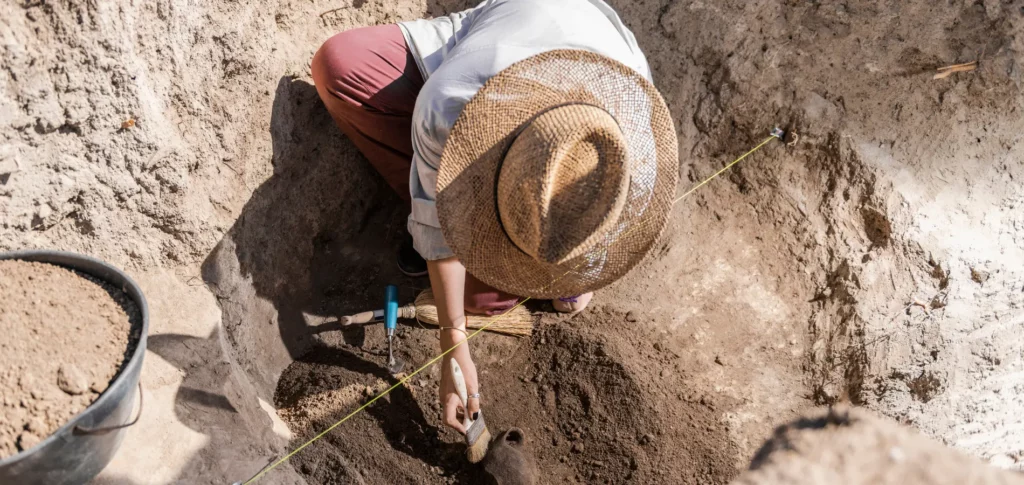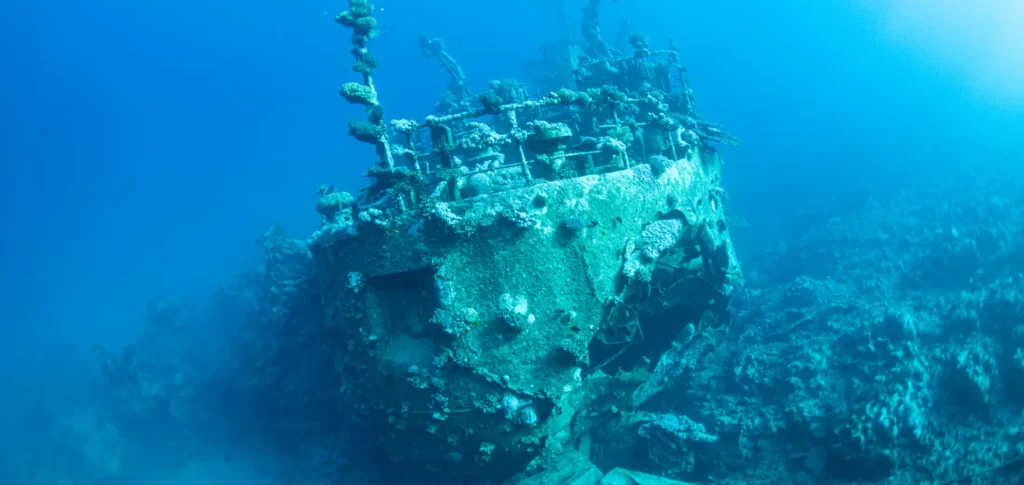UXO and Archaeology: Collaborative Approaches to Preserve History Safely
Unexploded ordnance (UXO) can pose a significant challenge to archaeological work around the world. These remnants of past conflicts not only threaten human safety but also impede archaeological research and heritage preservation. However, a collaborative approach that combines UXO detection and clearance with archaeological methodologies can ensure the safe preservation of historical sites.
In this blog, we explore the intersection of UXO and archaeology, highlighting the approach we use at Brimstone to ensure the protection of both historical artefacts and human lives.
The challenge of UXO
UXO is explosive ordnance that has failed to detonate. It may have been buried, dropped, fired, launched, projected, thrown, or placed in such a manner as to constitute a hazard, and can remain unexploded either by design or malfunction.
Throughout history, conflicts and military training have left behind a legacy of UXO around the world. They not only endanger local populations but also complicate efforts to develop areas of land and explore and excavate historical sites.

Impact on archaeological efforts
For archaeologists, the presence of UXO presents a significant obstacle to their work. Excavating a site contaminated with UXO puts researchers, fieldworkers, and local communities at risk of injury or even death. Moreover, the uncertainty surrounding the location and stability of UXO can make it challenging to conduct thorough archaeological surveys and excavations. As a result, historically significant sites can remain inaccessible or underexplored due to safety concerns.

UXO in marine environments
UXO isn’t just limited to archaeological sites on land. Marine environments are also at risk of unexploded ordnance, from devices such as sea mines and unexploded bombs.
As a result, underwater sites including shipwrecks, ancient settlements and submerged landscapes that can provide valuable insights into human history and civilisation may also require UXO support.

Collaborative solutions
Recognising the need to address both the preservation of cultural heritage and the mitigation of UXO risks, Brimstone ensures we always take a collaborative approach when working with archaeologists. By combining our expertise, we devise unique strategies to safely access and investigate archaeological sites affected by UXO, ensuring our approach is suitable for each individual site’s needs.
Risk assessments:
The first step for any project with planned ground intrusions is conducting a comprehensive UXO risk assessment. Using historical research methods, we assess the likelihood of discovering UXO on your site. This is done by placing your site in its military context, analysing the impacts of allied and enemy action alongside any post-war developments. We will then provide you with a bespoke UXO report, outlining the UXO risk level and providing actionable recommendations that align with your project scope, determining the safest approach for your planned excavation.
Surveying your site:
If there is a risk of UXO identified on your site, we might recommend that a UXO survey is carried out. Our Non-Intrusive UXO Surveys use state-of-the-art equipment to clear large areas up to 6 metres in depth. They excel in pinpointing shallow buried UXO, including land service ammunition, by using magnetometry to detect ferrous materials and map magnetic signatures.
Our UAVs are perfect for this type of project, as they can provide high-resolution imagery that helps archaeologists and UXO specialists identify areas of interest and potential risk. By overlaying UXO false colour maps with archaeological data, researchers can prioritise excavation areas and plan their fieldwork more efficiently. Where possible, we will always try to zone your site. This is because some areas of your site may have higher risks than others, and by zoning these risks we can reduce your overall costs and enable your work to progress on the areas with low risk.
This approach is suitable for archaeological sites as we use remote sensing techniques to conduct the survey without making any ground intrusions, protecting the historically important area you plan to excavate. However, as this method can only survey down to 6 metres, it won’t be suitable for all archaeology projects.
On-site support:
If a UXO survey isn’t suitable for your site, don’t worry – there are other ways we can support your project and ensure the safety of your team!
We regularly deploy our EOD engineers to provide a UXO Watching Brief for excavations and archaeology projects. This enables archaeologists to proceed with controlled excavations under the supervision of our engineers, using a tried and tested methodology that is flexible enough to promote rather than hinder your work. We mitigate the likelihood of any UXO encounters by using visual techniques to establish the presence of UXO or items relating to military activity which may inform the possible local presence of unexploded ordnance. If a suspicious item is found, our engineer can quickly identify if it’s UXO!
Another service we would recommend is a UXO Safety Awareness Brief, or a Toolbox Talk as they’re also known. These are included in our usual on-site services but can also be provided as a standalone service. The briefing covers general risks and hazards, basic UXO identification, and actions to take in the event of a UXO encounter, ensuring your team has a basic understanding of UXO risks before they start any work.
If you want to go one step further, we can provide site-specific training packages, focusing on the context of your specific site. These take approximately two hours to deliver and cover explosive munitions principles, sources of contamination, basic UXO identification, safety measures and specific historical information on your site obtained from primary and secondary research.
Booking UXO support for your archaeology project
The intersection of UXO risk mitigation and archaeology presents both challenges and opportunities for preserving historical sites and artefacts. Collaborative approaches that bring together archaeologists and UXO specialists are essential for safely accessing and investigating UXO-affected areas.
Through innovation, cooperation, and a shared commitment to heritage conservation, Brimstone can support you in safeguarding archaeological sites and your team members from the risks of unexploded ordnance.
If you have an upcoming project that requires UXO support, please reach out to our Commercial Team on 020 7117 2492 or by emailing enquire@brimstoneuxo.com. We’d love to hear from you!
You can keep up to date with Brimstone by following us on Facebook, Instagram, X (formerly known as Twitter), LinkedIn and YouTube.